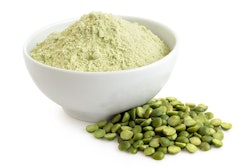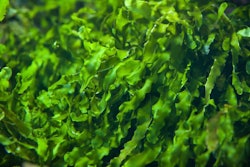
Several feed additive categories show promise in antibiotic-free production
With the tightening of restrictions on antibiotic use in food-producing animals around the world in recent years, several newer, alternative strategies have grown in popularity.
There is a wide range of antibiotic-free (ABF) alternatives, from enzymes to organic acids to Chinese herbal medicines and essential oils, but several have seen better uptake than others in the pursuit of affordable and effective ABF production.
“While they do not replace antibiotics in every situation, they do help reduce the over-reliance on antibiotics and are generally less expensive to apply,” said Joe Loughmiller, swine technical services manager for Phileo by Lesaffre.
Prebiotics and probiotics
Prebiotics and probiotics induce the growth of beneficial micro-organisms in the digestive tract. Some popular pre- and probiotic products are derived from yeast and Bacillus, according to Connor Padgett, North American poultry technical sales manager for Phileo by Lesaffre.
“There are always new developments occurring in the poultry industry as far as antibiotic alternatives,” he said. “Yeast and Bacillus have been the common choices over the last decade for producers wanting to utilize antibiotic alternatives (with over 60 products on the market between these two), however there are always new technologies being developed.”
Troy Lohrmann, president and CEO of Quality Technology International Inc., said pro- and prebiotics are widely used – and used in combination – for reducing antibiotic use, particularly in the U.S. and the EU.
“In addition to multi-strain probiotics, the combination of probiotics and prebiotics is gaining popularity due to the synergistic effect resulting from combining the various modes of action,” he said. “Such a change is in part due to better understanding of gut bacterial populations and interactions with probiotics and prebiotics. Probiotics and prebiotics have multiple modes of actions. These include production of antimicrobials, enzymes, organic acids, and other compounds, improving the balance of gut microbial content towards more beneficial and less harmful and pathogenic organisms, and modulating the immune response. The result is improving overall animal health and nutrition, as well as improving performance and food safety.”
He added that compounds, such as organic acids, inorganic acids, phytochemicals, antimicrobial peptides, postbiotics, heavy metals and clay minerals, are also being used in combination with probiotics and/or prebiotics in the poultry industry.
“In the poultry side of the market, there are a wide range of antibiotic alternatives that are being explored,” Padgett said. “While these products often can compete with antibiotics on a pricing basis, and in many cases are less expensive, their effectiveness is variable based on the situation.”
Loughmiller said his team has seen improved performance and livability in pigs and sows with the application of yeast beta glucans.
“We continue to research the benefits of manipulating the microbiome for the long-term health and well-being of maternal animals and their offspring,” he said.
Lohrmann said the field of alternatives to antibiotics for poultry and livestock continues to be an interesting and active area of product research, development and deployment.
“This is mostly due to the success the use of alternatives to antibiotics, such probiotics, and prebiotics, have experienced in the poultry industry during the last decade,” he said.
Bacteriophages
A bacteriophage is a virus that parasitizes a bacterium by replicating inside it. These natural predators of bacteria could be used to treat bacterial infections in animals and control the spread of pathogens to humans.
“These can be applied broad spectrum or in a method meant to target specific pathogens,” Padgett said. “Those will be something to watch for from the allied sector in the next couple of years if their implementation can be figured out in an effective method.”
 Bacteriophages are viruses that parasitize bacteria by replicating inside them. (auntspray | BigStock.com)
Bacteriophages are viruses that parasitize bacteria by replicating inside them. (auntspray | BigStock.com)Phytochemicals
Phytochemicals are chemical compounds produced by plants that can resist fungi, bacteria and viruses.
“Plant-based phytochemicals are another potential alternative to antibiotics that can gain more popularity,” Lohrmann said. “Some of these products can be highly refined and can be combined with other products. Consistent performance in the field and acceptable return on investment of probiotics and prebiotics have increased their commercial use. Effective plant-based phytochemicals are still more expensive today.”
Ionophores
Ionophores are chemical compounds that negatively affect the metabolism of gram-positive bacteria and protozoa. They are often used to improve weight gain, increase feed efficiency and prevent coccidiosis. The U.S. is the only region in the world that defines ionophores as antibiotics, so their usage is not universal like some of the other products.
“For poultry, the concern that relates specifically to resistance against ionophore coccidiostats has resulted in interesting regional differences in implementing practices that could help curb this problem. The U.S., unlike the rest of the world, define ionophore coccidiostats as antibiotics,” said Jason Lorjé, marketing director for Innovad. “This offers an opportunity in (no-antibiotics-ever) production systems that benefit from feed additive products that can help support the birds against coccidiosis, also where wild type coccidial vaccines are used, as the virulence of these can also produce potential negative effects. Here, feed additives that curb that virulence can be beneficial in optimizing performance.”
Costs and benefits
While the use of antibiotic alternatives is important for ABF production, it’s not the only key point, said Gustavo Carneiro, program manager – solutions and services at Novus International Inc.
“The change to antibiotic-free production is more than just exchanging antibiotics for additives,” he said. “The success of an ABF program is dependent on understanding and monitoring the housing environment, flock density, water quality, raw material quality and biosecurity.”
And, according to Shabbir Simjee, chief medical officer at Elanco Animal Health, there is some debate in the industry about the use of feed additives for disease prevention.
“Focusing solely on nutritional health products treats digestive diseases but leaves gaps in other areas such as respiratory diseases,” he said. “Because of this, cost cannot be evaluated on a 1:1 ratio. It’s weighing the cost of prevention/long term additives vs. treatment costs.”














